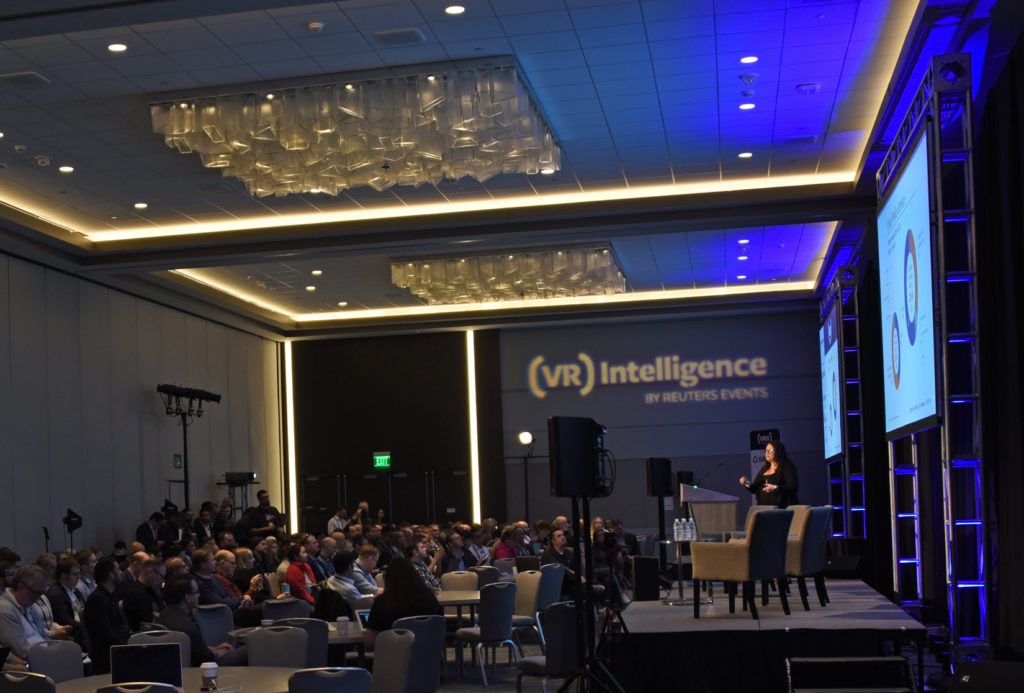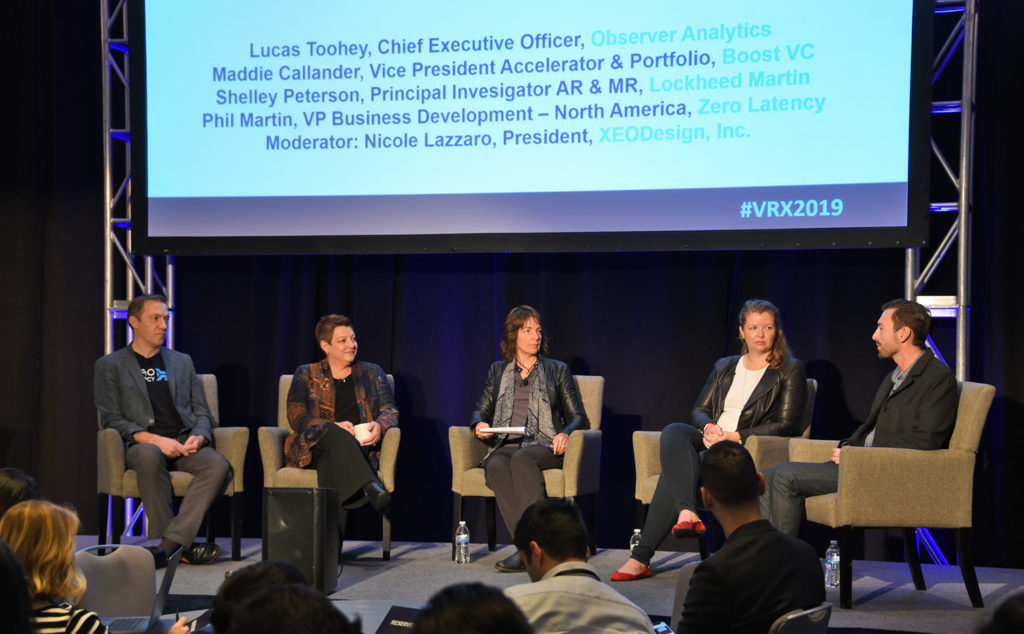Experts in the XR industry converged at the Hyatt Regency San Francisco Airport yesterday, Dec. 12, kicking off the 5th annual VRX Conference & Expo, a two-day event that covers virtual, augmented and mixed realities across different market sectors.
Day 1 featured plenty of speakers and panelists in the main conference room and networking in the expo hall, where about two dozen exhibitors showed their products and services.
The first speaker, Stephanie Llamas, vice president of strategy and head of XR at SuperData, a Nielsen company, gave a great overview of the industry that set the tone for the day, which was full of varied panel topics.

Stephanie Llamas speaks at the 5th annual VRX Conference in San Francisco.
Llamas led “XR Industry Low Down: Will 2020 Be ‘The Year’?” She was optimistic, and here’s why you – as a VR operator in the location-based entertainment sphere – should be too… People are really starting to get into XR. It was a $3.9 billion market in 2018 ($2 billion of that from VR specifically), and spiked to $4.7 billion this year ($2.4 billion from VR). In a general sense, that means people know the technology exists and many have actually tried it.
“It’s very exciting and we’re going to see it continue growing in the next few years and reach a critical mass,” Llamas said. More good news for LBE operators: Gamers are the biggest accelerators of VR. The more gamers seeking out your experience, the better the ROI. But this type of VR also reaches the person who might be in your FEC, for example, because you have great food and beverage. “Location-based entertainment does a great job of putting the tech in front of people who otherwise wouldn’t have proactively went after it,” Llamas explained.
Almost all virtual reality software revenue comes from the LBE and consumer gaming sectors (about 91 percent combined). However, SuperData projects that consumer gaming will surpass LBE in revenue by 2022 as the consumer market strengthens with newer technology (like headsets) and games. But that certainly doesn’t mean revenue will be lower. It just means location-based entertainment needs to be something users can’t do at home, which is a key aspect of its success.
Zero Latency’s experience allows socialization for up to eight players, said Phil Martin, the free-roam VR company’s VP of business development, who was on the panel “Utilizing data to track ROI through the ecosystem.”
“They get a bond being immersed in VR for half an hour,” he said. That type of social experience, as many of the speakers echoed throughout the day, cannot be replicated at home, and will continue to be the bread and butter for success on location.
RePlay will have details about Day 2 of the conference in our Monday newsletter. A full story on the event and the future of VR will be in the February issue, so keep your eyes peeled for that as well. In the meantime, visit www.vr-intelligence.com for more information.

From left: Phil Martin (Zero Latency), Shelley Peterson (Lockheed Martin), panel moderator Nicole Lazzaro (XEODesign, Inc.), Maddie Callander (Boost VC) and Lucas Toohey (Observer Analytics).




1 Comment
Pingback: Two-Day VRX Conference & Expo Packed With Real Knowledge on Virtual Reality | RePlay Magazine